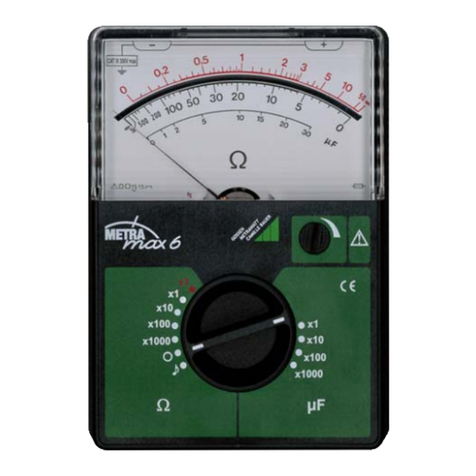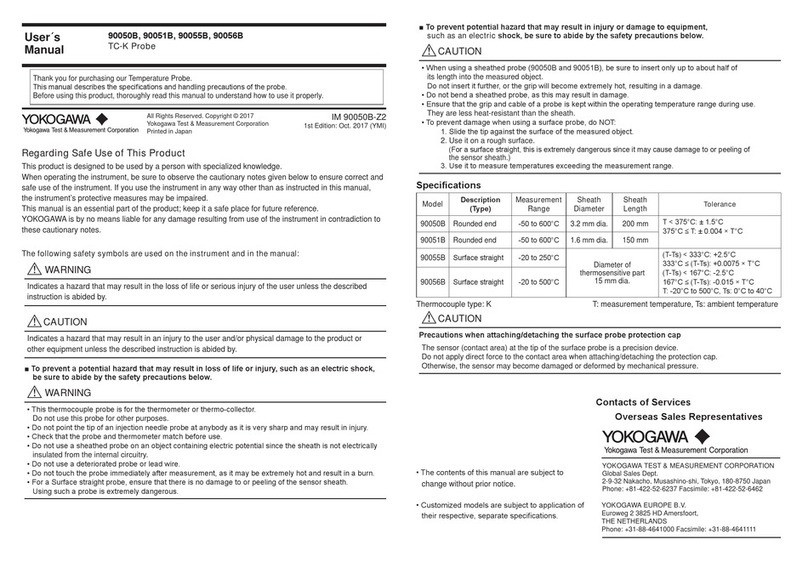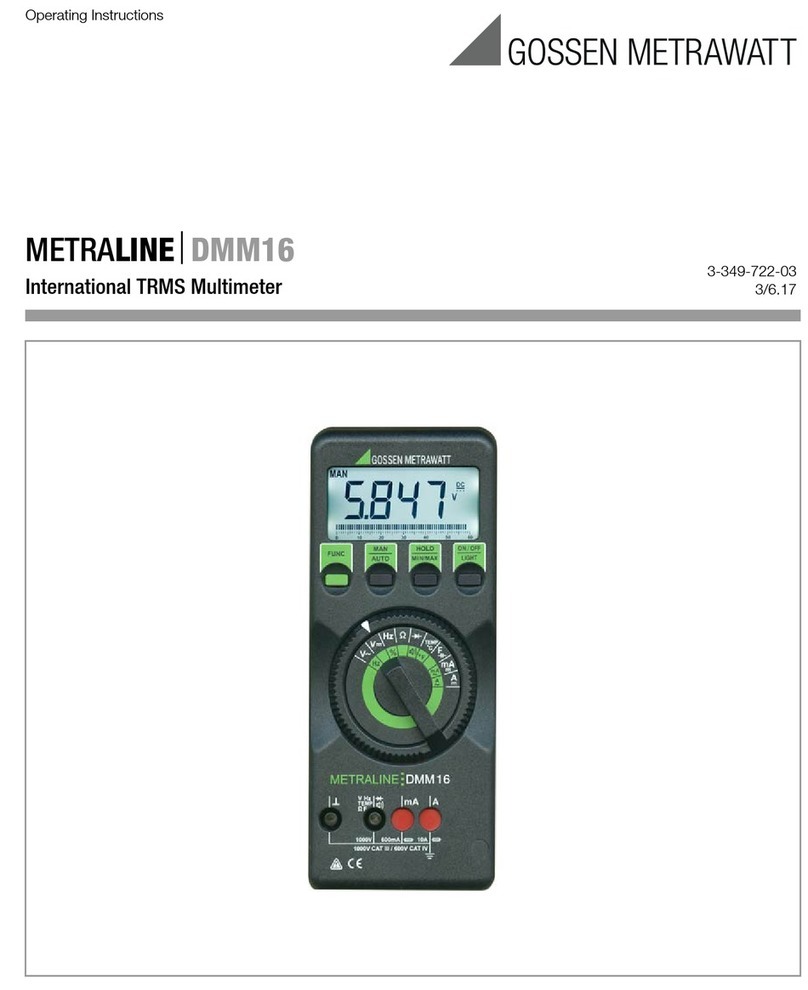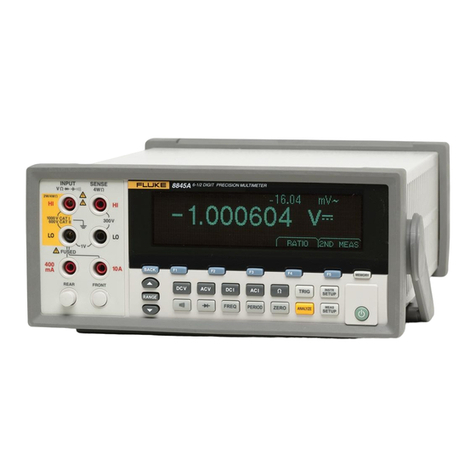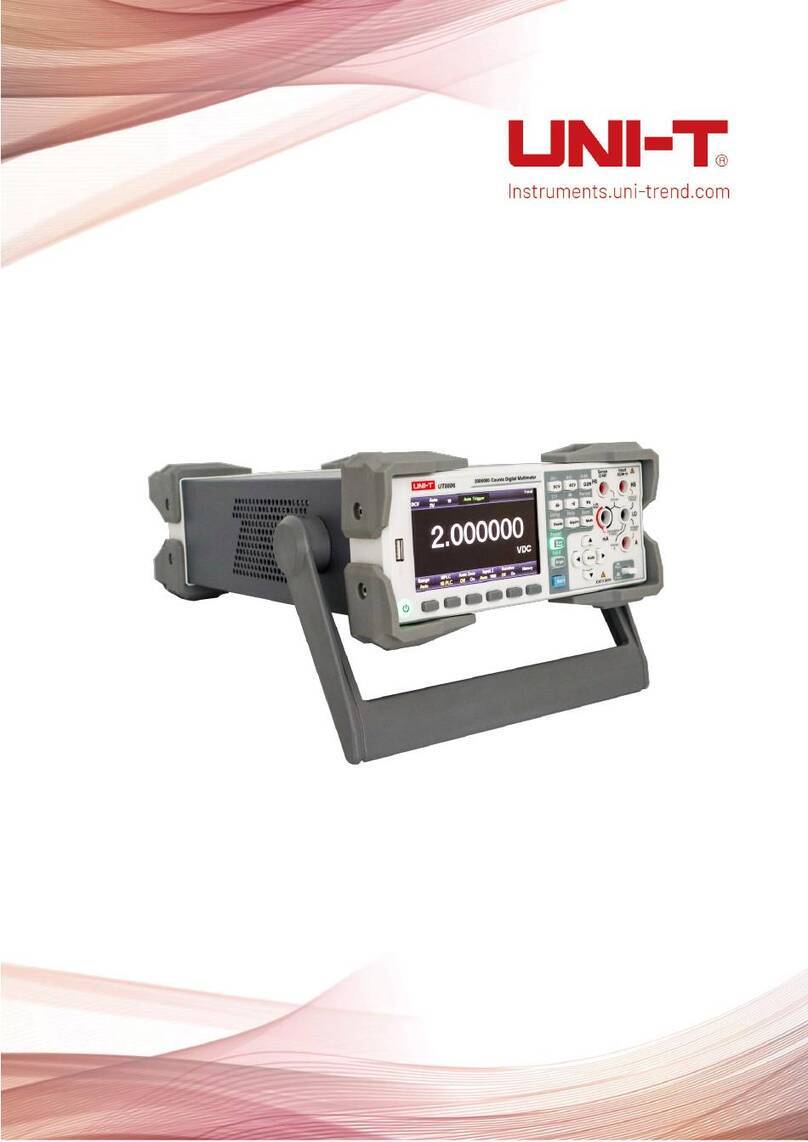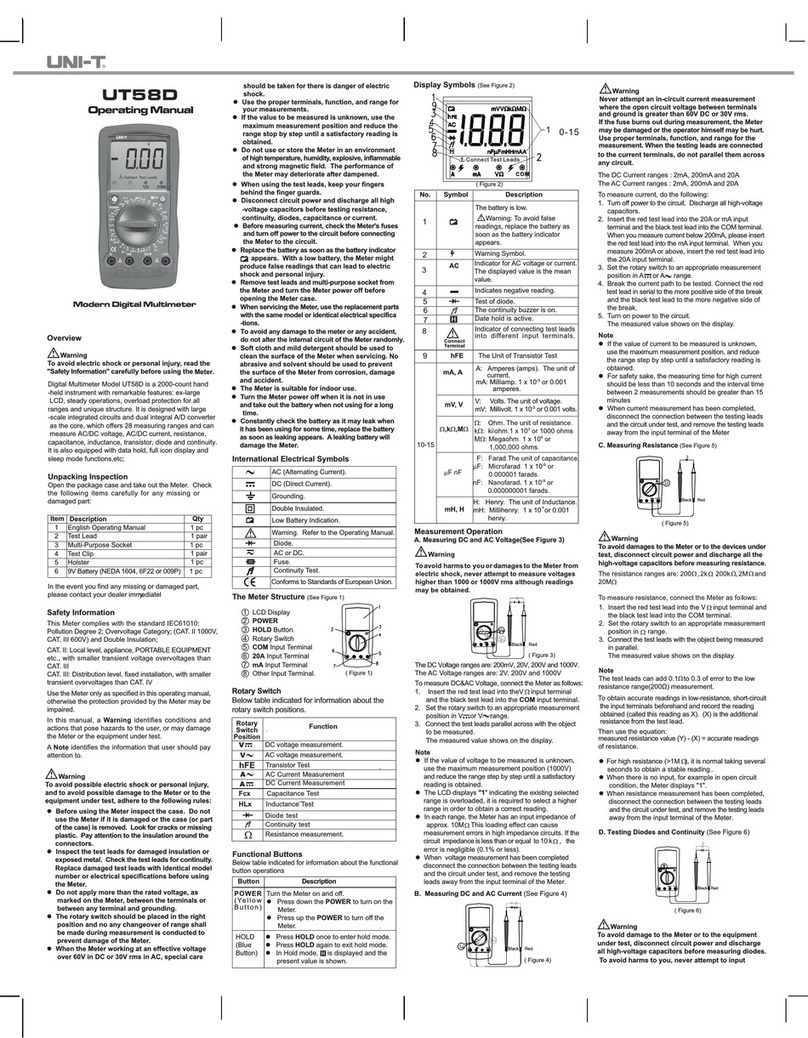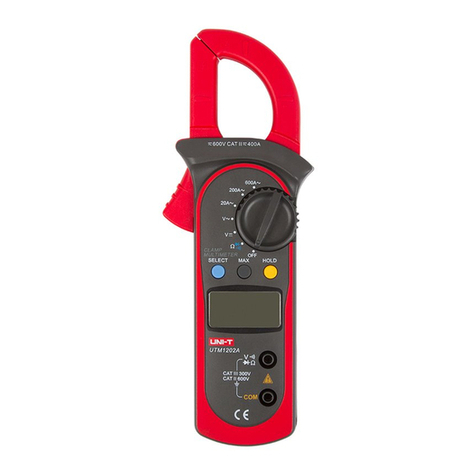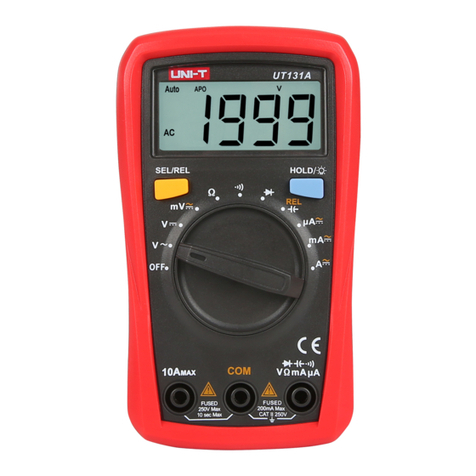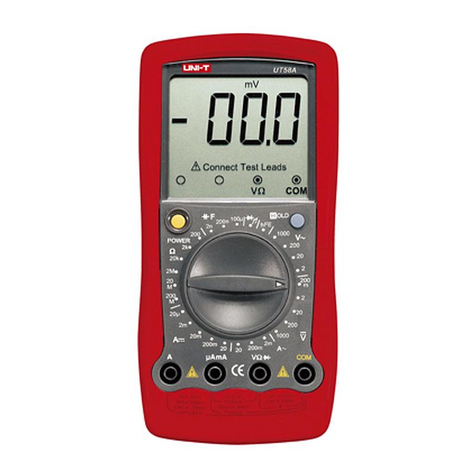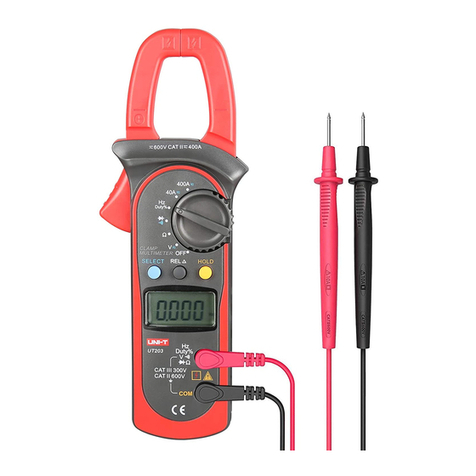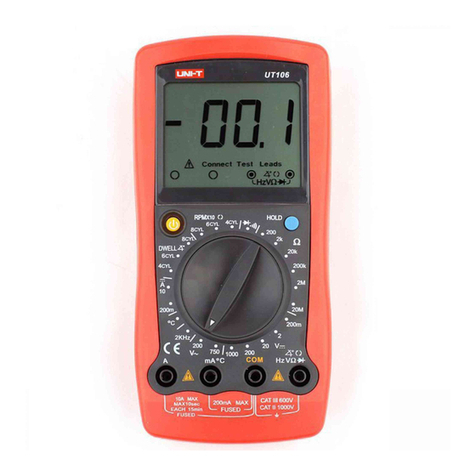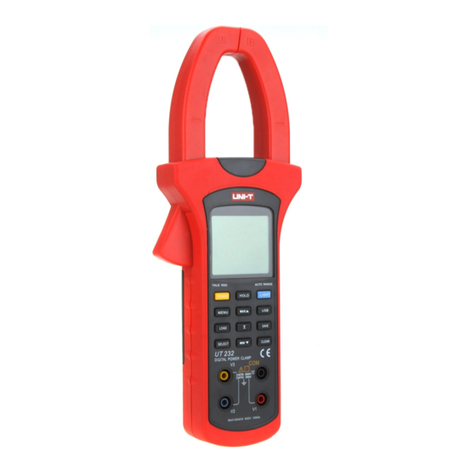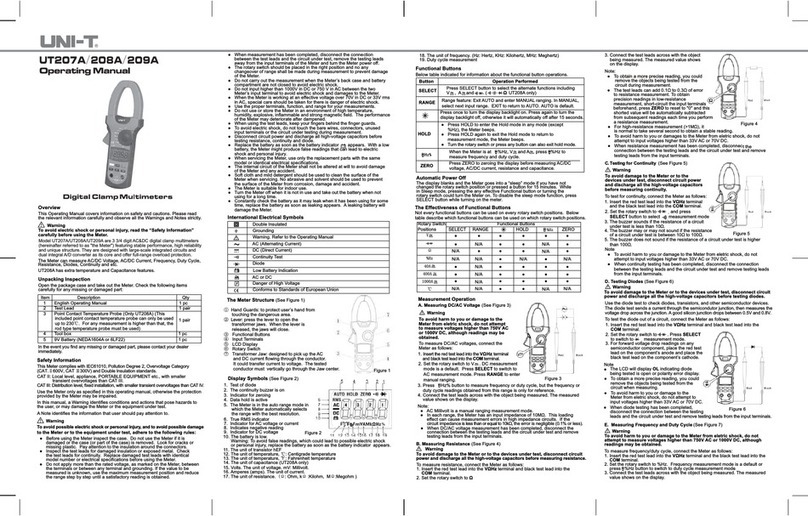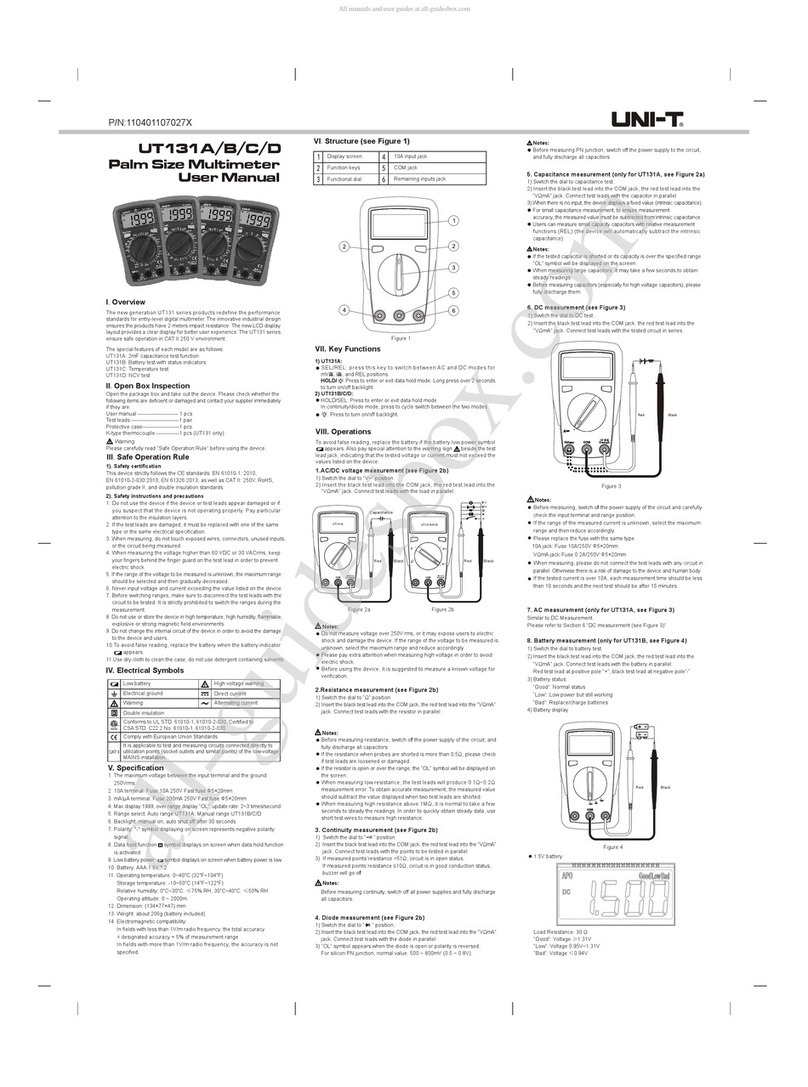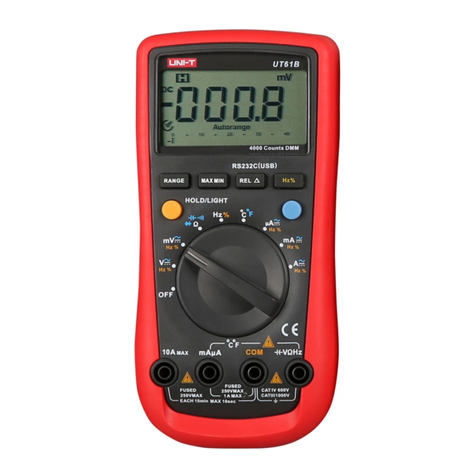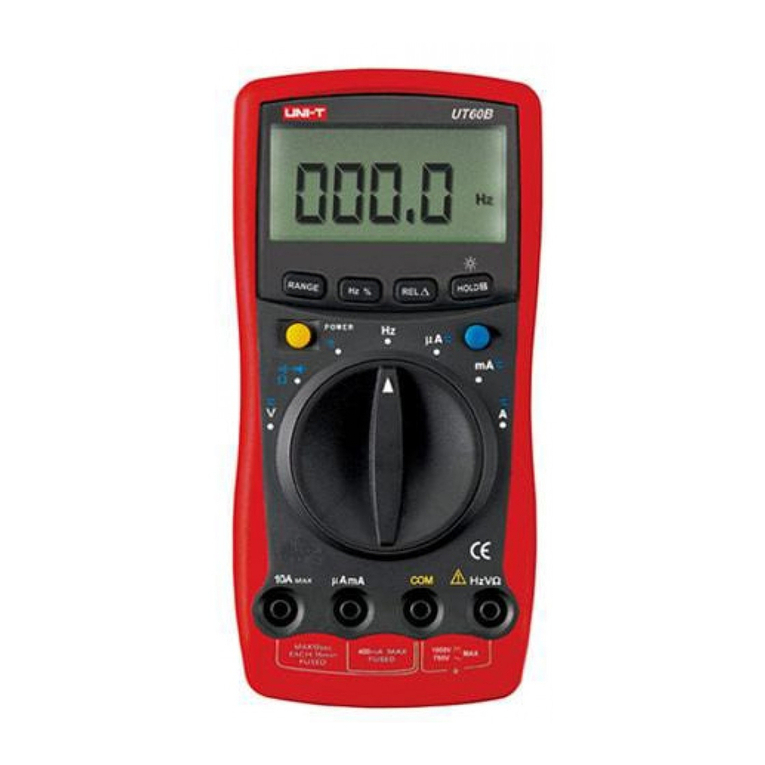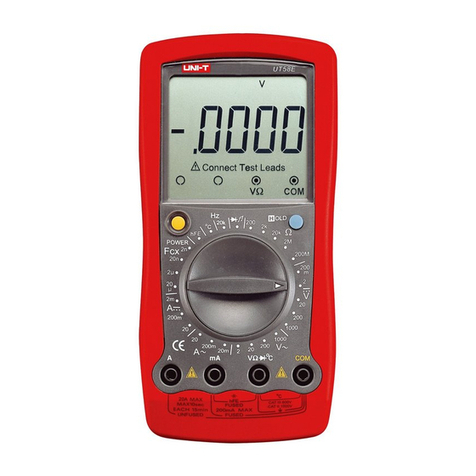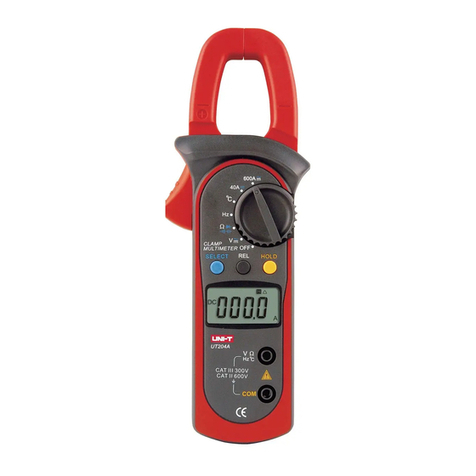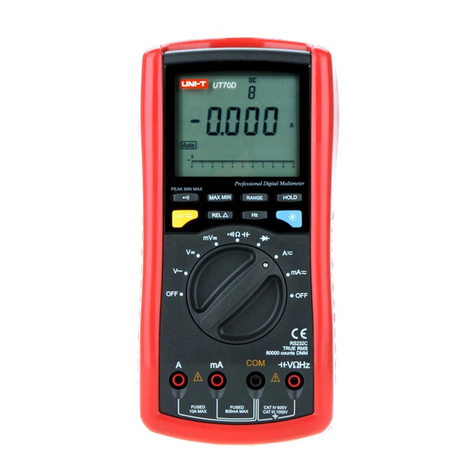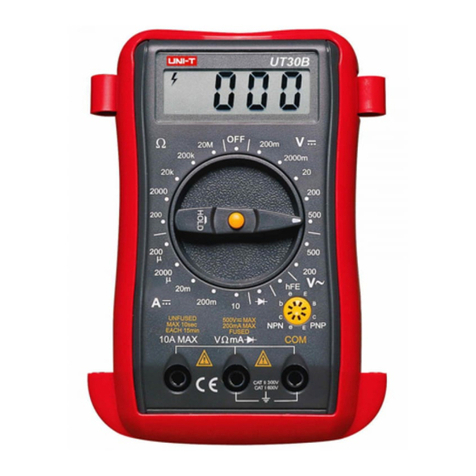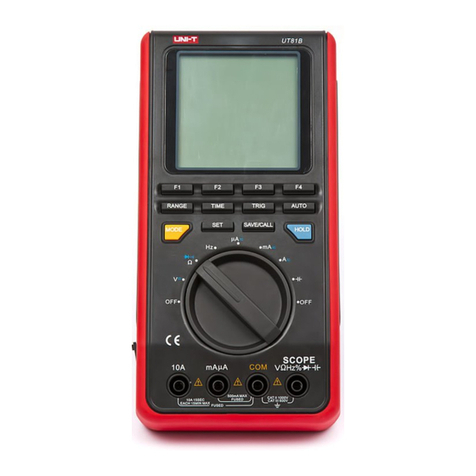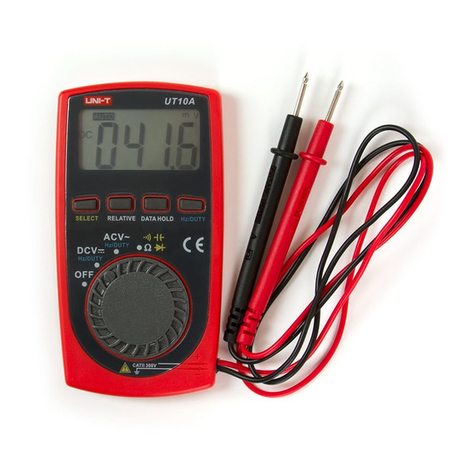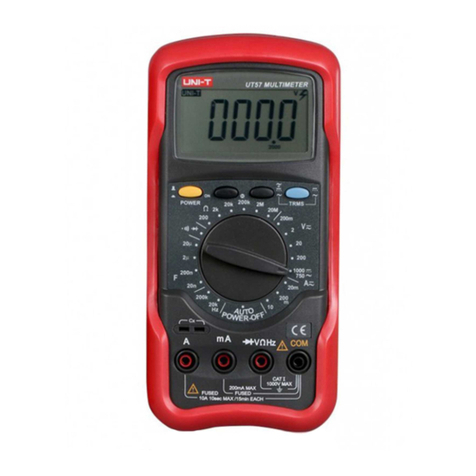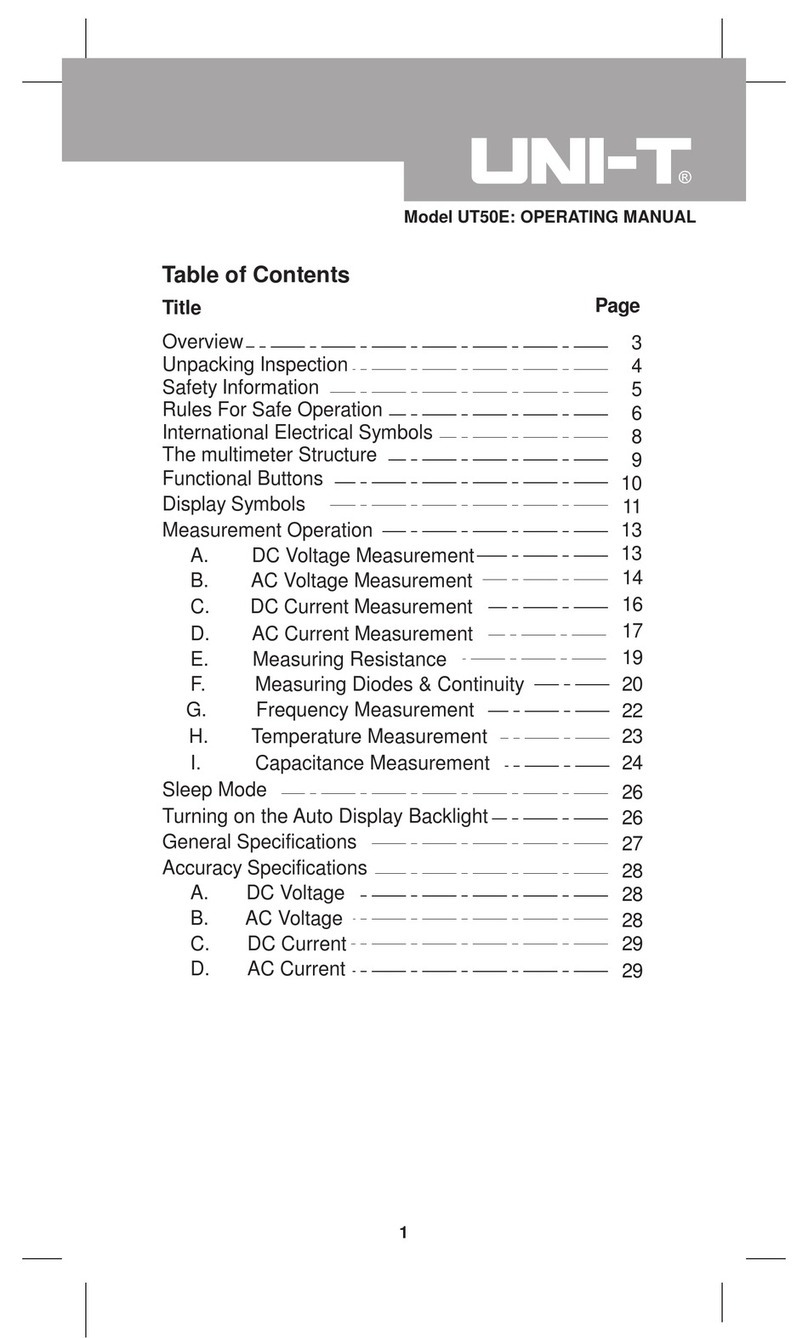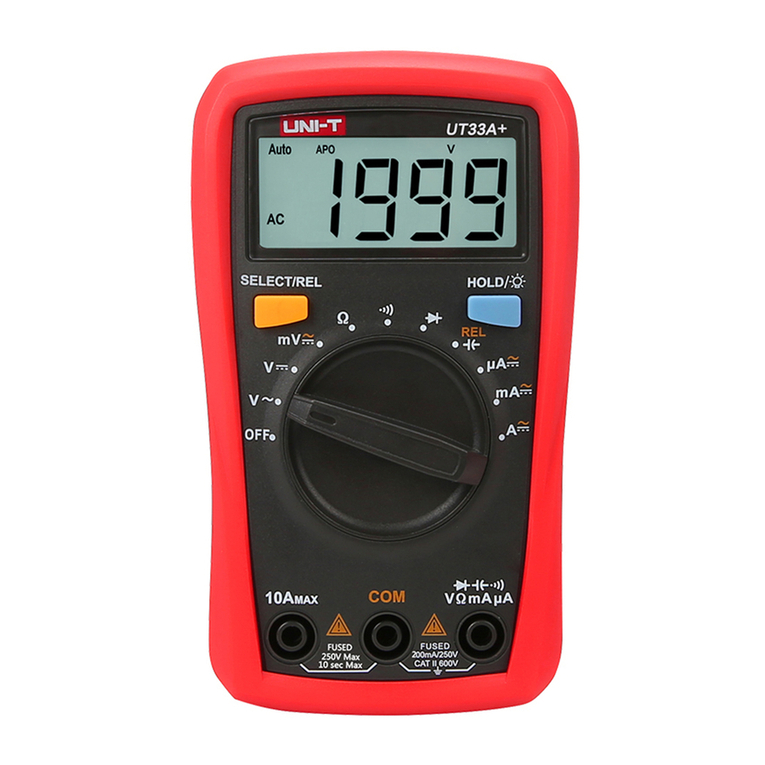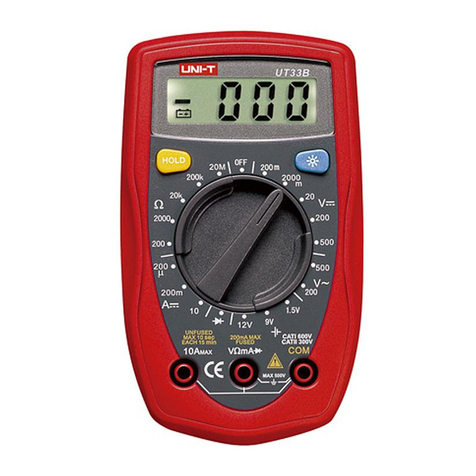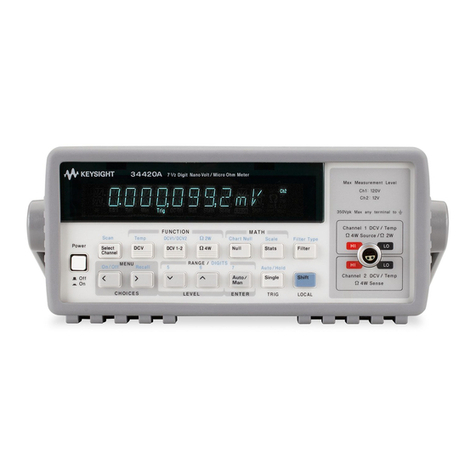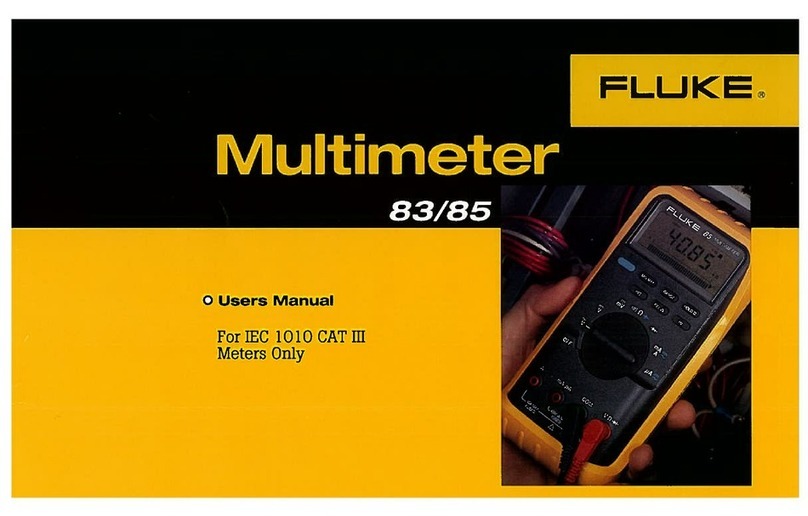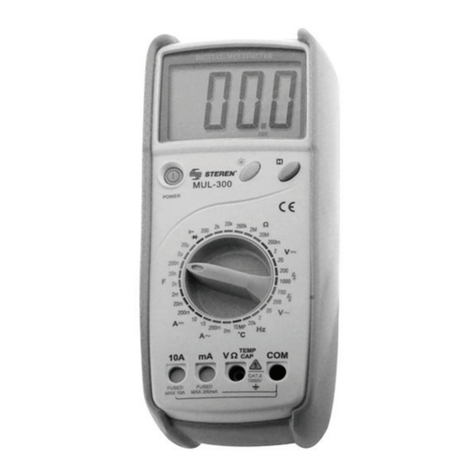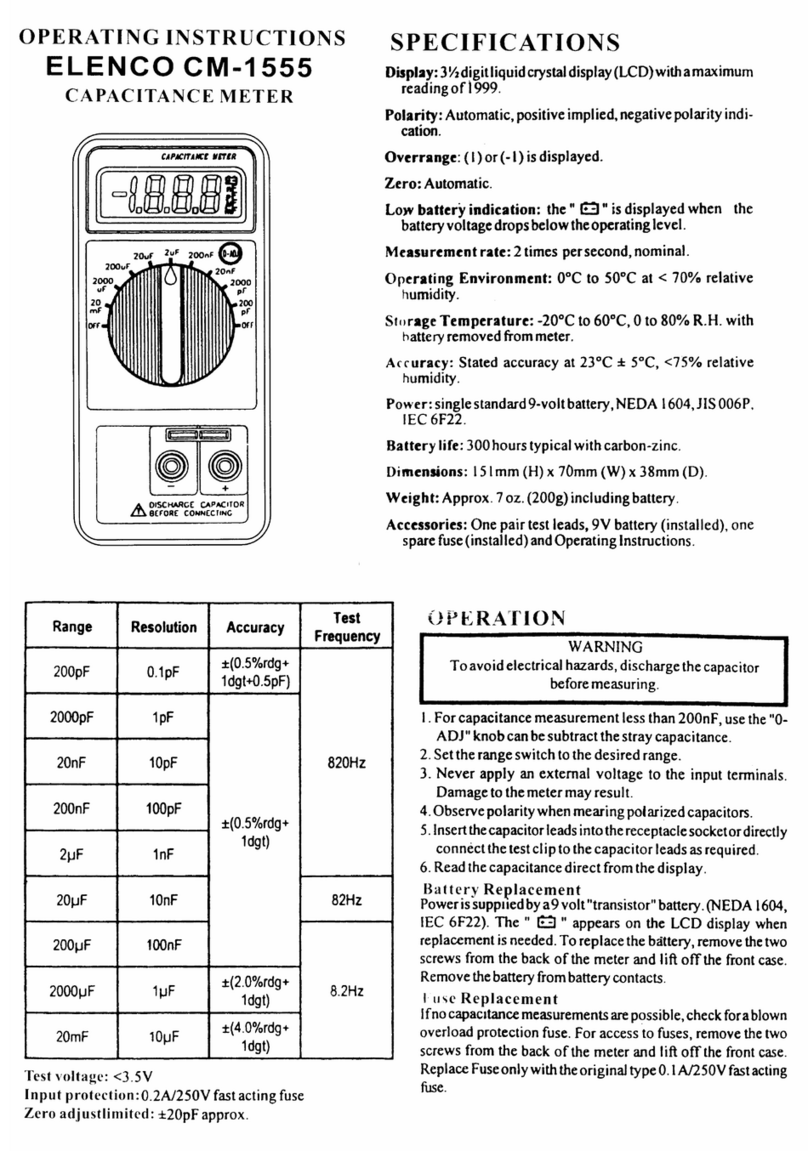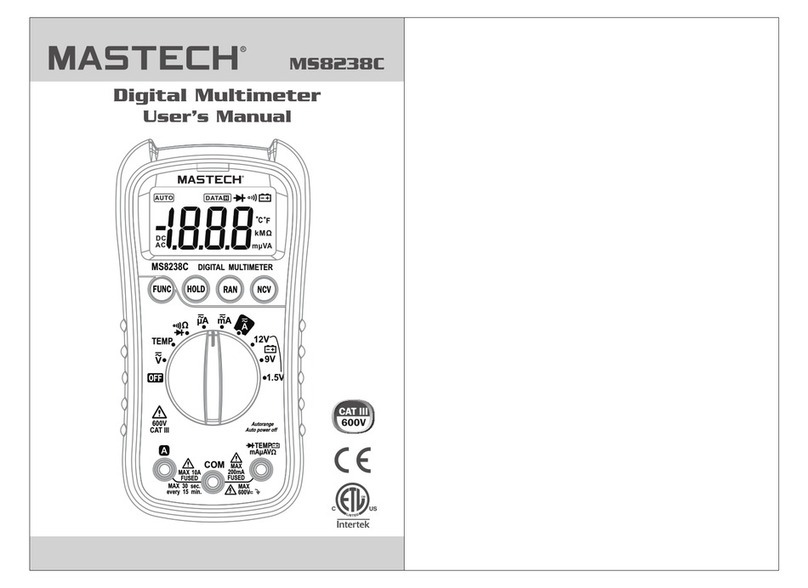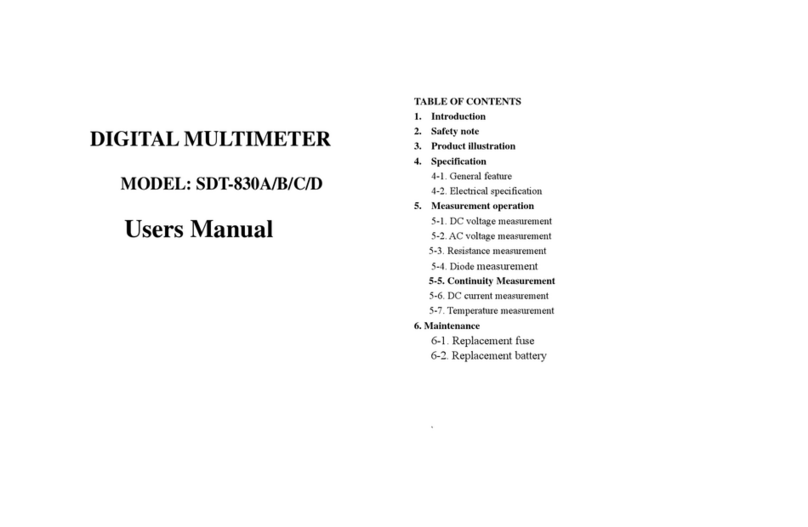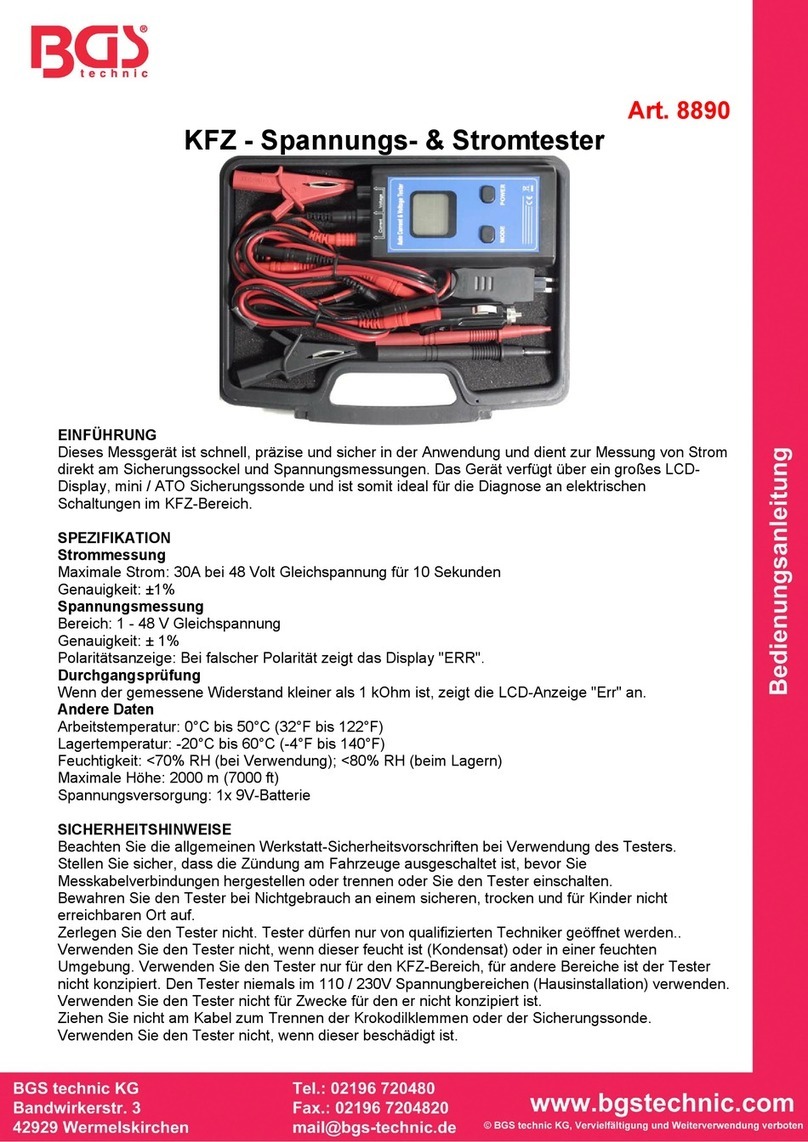Rules For Safe Operation (2)
lWhen the Meter working at an effective voltage over 60V in DC or 30V rms
in AC, special care should be taken for there is danger of electric shock.
lUse the proper function and range for your measurements.
lDo not use or store the Meter in an environment of high temperature,
humidity, explosive, inflammable and strong magnetic field. The
performance of the Meter may deteriorate after dampened.
lWhen using the test leads, keep your fingers behind the finger guards.
lDisconnect circuit power and discharge all high-voltage capacitors before
testing resistance, diodes or current.
lBefore measuring current, check the Meter's fuses and turn off power to
the circuit before connecting the Meter to the circuit.
lReplace the battery as soon as the battery indicator appears. With a
low battery, the Meter might produce false readings that can lead to electric
shock and personal injury.
lTurn the Meter power off before opening the Meter case.
lWhen servicing the Meter, use only the same model number or identical
7
Model UT20B: OPERATING MANUAL
